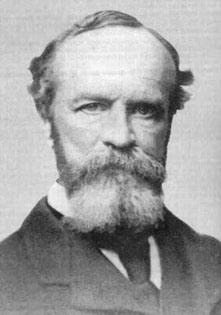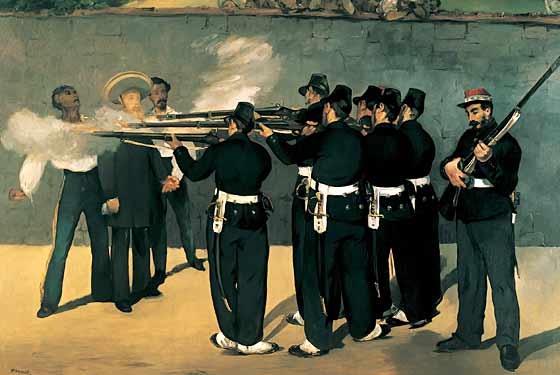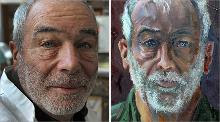10.22.2011
ETA's Endgame
On Thursday ETA announced the definitive end of violence, a recognition of defeat that has seemed inevitable for some time. Their leadership has been arrested and jailed repeatedly, their ability to bring in the money through extortion seriously eroded. It's good news, even though the statement is a pitiful example of their habitual double speak. So now it's the beginning of what will likely be a protracted and messy process to definitively do away with the organization.
10.21.2011
The Martyr
 Yesterday Khadafy was captured and then assas- sinated in Sirte. That extra- judicial execution is un- fortunate, but not very surprising. People are violent and vengeful. Khadafy himself was a ruthless dictator who killed with impunity. I just read that Hugo Chávez has declared that Khadafy is a martyr. Is that the Bolivarian Revolution? A martyr! As Chávez lamented the loss of his close friend hundreds of thousands of Libyans celebrated the fall of the Khadafy regime. (But we should be fair: Tony Blair also referred to Khadafy as a good friend.)
Yesterday Khadafy was captured and then assas- sinated in Sirte. That extra- judicial execution is un- fortunate, but not very surprising. People are violent and vengeful. Khadafy himself was a ruthless dictator who killed with impunity. I just read that Hugo Chávez has declared that Khadafy is a martyr. Is that the Bolivarian Revolution? A martyr! As Chávez lamented the loss of his close friend hundreds of thousands of Libyans celebrated the fall of the Khadafy regime. (But we should be fair: Tony Blair also referred to Khadafy as a good friend.)
9.30.2011
William (not the stats guy) James and Baseball
9.29.2011
One more strike!
 Mike Vacarro just wrote that last night's baseball events add up to the greatest day in baseball history. And it's quite possible that's no exaggeration. What transpired included both some fantastic baseball and without a doubt unexpected and unlikely events that kept getting stranger and more preposterous. Adrian Gonzalez's God does indeed have a plan. And an identity: author of baseball melodramas so far fetched no publisher will touch them. Now, if you're a Braves fan or a Red Sox fan, just cross out "greatest," pull out your dictionary and get to work. "Worst" doesn't come close to describing it. That goes without saying. Otherworldly. Ghoulish. Torturous. Simply unbelievable. Etc. (No uneasy sleep for me: in the wake of 1986, I opted out. From then on I vowed to become a mere observer of baseball. Some might say I lost the faith. True. But I prefer to think of it as a conversion: if it doesn't matter to me who wins, I win with every single game.)
Mike Vacarro just wrote that last night's baseball events add up to the greatest day in baseball history. And it's quite possible that's no exaggeration. What transpired included both some fantastic baseball and without a doubt unexpected and unlikely events that kept getting stranger and more preposterous. Adrian Gonzalez's God does indeed have a plan. And an identity: author of baseball melodramas so far fetched no publisher will touch them. Now, if you're a Braves fan or a Red Sox fan, just cross out "greatest," pull out your dictionary and get to work. "Worst" doesn't come close to describing it. That goes without saying. Otherworldly. Ghoulish. Torturous. Simply unbelievable. Etc. (No uneasy sleep for me: in the wake of 1986, I opted out. From then on I vowed to become a mere observer of baseball. Some might say I lost the faith. True. But I prefer to think of it as a conversion: if it doesn't matter to me who wins, I win with every single game.)With time the details fade and last night was tremendously rich with singular moments. Just in Baltimore, which is where my attention was: how about those double plays in the bottom of the 2nd and bottom of the 6th! (Pedroia: sterling defense and a 3 for 4 night, including go ahead homer in fifth!); Ortiz trying to reach 2nd in the top of the 7th (bone-headed!!); the rain-a splendidly extended seventh-inning stretch, allowing events down in Florida to catch up with events in Baltimore!; Scutaro stopping between second and third in the 8th (really bone-headed: Marco, if the ball is caught you're not making it back to first in any case... just keep running!! First man fired: Tim-go-stop-go-whatever-Bogar); Ellsbury stranded at third with no outs in ninth(!); Papelbon, Papelbon, Papelbon. (Gee, I wonder what he's going to throw?); Carl Crawford: catch it, no, not quite... Oh, did we ever blow it! Can it get any worse? YES: the Rays did the impossible and your season is over! Now. And of course we will always remember that when Papelbon struck out Jones and Reynolds to start the 9th and got two strikes on Davis, it really looked like the Sox were headed for Detroit or Dallas. One more strike!
In short, you get what you get. And we haven't even addressed the just as incredible events in Atlanta yet!
9.22.2011
Wednesday's Executions
8.13.2011
The Confederate Flag and Racism
When presidential candidate Rick Perry was elected governor of Texas he invited rocker Ted Nugent to perform at his inaugural ball. Great choice. Ted came to the party wearing a shirt with a confederate flag on it. Perry had no problem with that. Check out Ted's message to then Senator Obama during one of his concerts.
8.11.2011
Bryce Harper's Implosion
The game featured very impressive pitching from both Richmond starter Eric Surkamp (9 Ks) and Senator's starter Shairon Martis (10 Ks). That's a lot of whiffing!
8.06.2011
Replays and Contingency
7.14.2011
Baseball and Alcoholism
 A couple of days ago I finished reading Bottom of the 33rd, a wonderful book by Dan Barry about the longest baseball game ever played. (Thank you, Peter!) I remember reading about the game back in 1981, and I've always been quite fascinated by the idea of an endless ball game, but in fact I hadn't really paid much attention to this unique bit of baseball history. It's a fantastic story. The book's subtitle is "Hope, Redemption, and Baseball's Longest Game." Barry does give us many details about the game itself, of course, but the book is to a large degree a series of mini biographies about several of the event's protagonists. The lives of two of the game's participants progress downwards due to excessive alcohol consumption, eventually taking very different paths, one tragic, the other hopeful and redemptive. (The odd detail that this game was begun the evening of Holy Saturday and continued into Easter morning adds a curious frame for the idea of redemption.) It's a book I highly recommend.
A couple of days ago I finished reading Bottom of the 33rd, a wonderful book by Dan Barry about the longest baseball game ever played. (Thank you, Peter!) I remember reading about the game back in 1981, and I've always been quite fascinated by the idea of an endless ball game, but in fact I hadn't really paid much attention to this unique bit of baseball history. It's a fantastic story. The book's subtitle is "Hope, Redemption, and Baseball's Longest Game." Barry does give us many details about the game itself, of course, but the book is to a large degree a series of mini biographies about several of the event's protagonists. The lives of two of the game's participants progress downwards due to excessive alcohol consumption, eventually taking very different paths, one tragic, the other hopeful and redemptive. (The odd detail that this game was begun the evening of Holy Saturday and continued into Easter morning adds a curious frame for the idea of redemption.) It's a book I highly recommend.In any case, yesterday I was at the Dickinson library and on my way out I stopped to take a glance at the new arrivals bookcase. And there I found Language of the Heart: A Cultural History of the Recovery Movement, from Alcoholics Anonymous to Oprah Winfrey by Trysh Travis. (That name is too good; do you think it's real?) Interesting. I've just spent a little time reading here and there, but for an academic press work it's quite readable. Good job, Trysh! So thinking about baseball and alcoholism has got me thinking about "hitting bottom." My associations can by silly ("hitting," baseball; "bottom," alcoholism, but also baseball), but the idea, the phenomenon of hitting bottom is both sad, sad, sad and also potentially a starting point for hope and redemption. And that got me thinking about Gil Scott Heron, a great precursor of spoken word art and author of that 70s hit, "The Bottle." It's wonderful song. And so sad. "Livin' in the bottle..." (I saw Gil Scott Heron at a nightclub in Boston in 1977 and what I most remember from that performance is "Winter in America." Chilling!) Mickey Mantle, Billy Martin and a host of others. Livin' in the bottle, indeed. Baseball stories. Winning and Losing. I still want that never ending game. And I can assure you, in the unlikely case I ever get to be President of a baseball league, there will be no curfews. (And the foul poles will have arrows at the top, signaling that they are vectors, continuing upwards infinitely, pointing us all up into the endless cosmos.) Play on!
7.12.2011
"May I address you as Mark?"
 Yes! I got asked that on the phone this morning and I so much appreciated the kind gentleman's little courtesy: you were kind enough to ask, so of course, let's move on to first names... (I'm filling out a seemingly endless financial aid application for our youngest and I had to call the help desk for some clarification; not only was my telephone helper courteous, he was, indeed, helpful: my question was answered clearly right away.) This little post makes more sense if you read my earlier post on how we address one another. Then you should read Alma Aldrich's post, which is also related.
Yes! I got asked that on the phone this morning and I so much appreciated the kind gentleman's little courtesy: you were kind enough to ask, so of course, let's move on to first names... (I'm filling out a seemingly endless financial aid application for our youngest and I had to call the help desk for some clarification; not only was my telephone helper courteous, he was, indeed, helpful: my question was answered clearly right away.) This little post makes more sense if you read my earlier post on how we address one another. Then you should read Alma Aldrich's post, which is also related.Last night I heard George Scott's name come up while watching the all star game home run hitting contest (I couldn't take more than 10 minutes -- pretty dumb stuff). He was a memorable player! The Boomer! I wonder what he's up to now. A great mystery: how do you explain his horrible year at the plate in 1968?: in 350 at bats he batted .181 and has 3 home runs! 1968 was the year of the pitcher--Luis Tiant's ERA that year was 1.60!); nonetheless, .181 is truly horrible.
6.28.2011
Basque Terrorism and Poor Journalism
Let's be clear: jailed ETA terrorists are not political prisoners; they are not prisoners of conscience. Many of them are in jail for murder or attempted murder. Others are imprisoned for belonging to an organized armed group that in a 40+ year campaign has killed over 800 people, extorted thousands and forced many to leave their homes with threats of violence.
There is a lot of hope in the Basque Country these days and the absence of violence is to be celebrated. But unless people get honest about the nature of ETA there is little hope for true reconciliation.
6.24.2011
Blessed Litter!
A couple of years ago I had an intensely strong gastronomical flashback to a candy bar I enjoyed as a very small child. It was a chocolate bar that was divided into four sections, each one filled with a different flavor (caramel, nougat, and ???) I really wanted to try one of those sweets again, but there was a basic problem: for the life of me I couldn't remember the name of the thing. Every time I passed by the candy section in a store I'd look for it, but it hasn't appeared. I've asked several people, but no one seemed to know what I was talking about. I've dreamed about this chocolate bar, and it's as if I could taste it, but still no name. And thus, no easy way to even know if it still exists.
So this morning I'm on the return half of my walk with Waldo and I see some litter in the curb. A glimmer of familiarity. I lean over. And there it is: Sky Bar! By Necco. Oh JOY!!! Now it makes sense: Necco (New England Confectionary Company) is a Massachusetts based business. (I remember their factory near MIT!) They don't seem to have good distribution in Pennsylvania. It's been about forty-five years since I had one of these babies, and I'm actually pretty excited to know they're still making them. So, any friends or family in the Boston area who come upon this blog post: bring a Sky Bar to Carlisle (or to Little Compton next weekend) and make Mark a very happy man!
The Majesty of Balanchine's "Serenade"
Feeling tremendously intrigued by this masterpiece, I did a quick search this morning and came across this interesting essay.
I can't wait to see it again tomorrow! And I just happened to get NYCB's 2011-12 season brochure and they will be performing Serenade next May. Hope I can go.
6.21.2011
Self-Esteem and Dignity
 Do American children suffer from an excess of self-
Do American children suffer from an excess of self-esteem? The answer, according to recent essays, is a definite yes. (See, for starters, the cover article in the current Atlantic Monthly, "How to Land Your Children in Therapy" and the November, 2010 National Review article "Self-Esteem and Character.") My take on this is pretty simple: parents, coaches, etc. should forget about cultivating self-esteem and focus instead on helping children understand and develop a sense of dignity. (Many people like to talk about "character development," but character has always seemed to me a vague and dubious notion.) I'm probably somewhat self-delusional, but I like to think that as a parent I had an instinctive sense from the beginning that self-esteem was a bogus concept. I'm sure that my ideas about dignity are heavily influenced by Spanish culture, which, I believe, has created complicated links between concrete, exterior signs and behaviors, on the one hand, and abstract ideas about self and worth on the other. In this view, a "proper" sense of self, of "being-in-the-world" renders low self-esteem irrelevant. (Spaniards do coddle their children in some ways, and I have had numerous experiences where visitors have wondered if Spanish parents weren't spoiling their kids. On the other hand, many Spanish parents (and teachers!) feel quite a bit more free to tell kids what dumb asses they are! What Spanish kid hasn't been told a hundred times he's idiota, estúpido, tonto! Kids do do stupid things and they should be called out on it. Euphemisms and lies just confuse. The "Mafalda" comic strip above shows Mafalda somewhat confused: the sign says "Keep Off the Grass," but for the joke to make sense we need to translate it more literally: "stepping on the lawn prohibited." The girl's response: "And not dignity?" That is, so stepping on the grass is off-limits, but what about stepping on dignity? ("Mafalda" is a famous creation of the great Argentine cartoonist Quino.) The vignette is very funny and it makes a serious point: you can mess with people's "self-esteem" and not worry about it, for surely life itself will put it in its proper place eventually. But don't mess with dignity. In adulthood, a very well developed sense of dignity makes one almost impervious to the vicissitudes of life. But there's always self-immolation. This month's example: Anthony Weiner.
One of the things I value most highly about Central Pennsylvania Youth Ballet is how it functions as a powerful antidote to the "touchy feely" qualities of contemporary culture: no trophies, no undeserved commendations, no lies about how wonderfully talented everyone is from the get go. These kids know what it takes.
Finally, yesterday I came across a kid with dignity. This video may seem very strange to anyone unfamiliar with Spanish culture generally, and Andalusian culture specifically. This boy, Fernando Caballo, sings a saeta to an image of the Virgin Mary in a Holy Week procession in the town of Marchena, near Seville. (This was nine years ago; he's still at it today as a young man.) It's interesting how he's surrounded mainly by men. Watch it here. Let me know what you think.
6.17.2011
Don Quixote in the XXI Century (1)
6.14.2011
Enough Already with the First Name Treatment!
A few years ago author Ralph Keyes addressed this issue in the Christian Science Monitor. I agree with what he wrote and I encourage anyone reading this to link to Keyes' short commentary. I'd add the following: the notion that more extensive use of first names is somehow a practice that promotes equality and lessens class distinctions is a chimera. To the contrary, individuals who do not have wealth or social rank stand to lose out because they are deprived of one of the few mechanisms available to them for having their dignity publicly recognized. Dignity is (or should be) important to all of us; it's especially important for those individuals who may lack other kinds of capital. I'm sure Amanda (the ubiquitous name tag) meant no disrespect when she addressed me by first name, but even if she had, I have "protection": age, being a white male, and the real currency Amanda just handed over to me. But when a recent immigrant needs some assistance at the customer service desk and the kid behind the counter (condescendingly?) refers to her as "María" as he explains that she's out of luck, she really is, because María is not yet confident enough in her English to respond, "Please, it's Ms García." To all of you, all of us, it's Ms García.
6.06.2011
Big Dunce of 2011 #3: Barnes & Noble
6.03.2011
Out at the Ball Park
4.29.2011
And Without Irony (Note on Granma)
The image shown above is moving around cyberspace as a call for internet access for Cubans. See a brief explanation here.
4.28.2011
Big Dunce of 2011 #2: Orly Taitz
4.23.2011
Cuban Media
3.06.2011
Peter Aldrich, Painter
2.25.2011
Hazel Sabas-Gower's "Green"
Sometimes contemporary dance leaves me cold. It can be overly cerebral, much like abstract expressionist painting. As I was watching "Green" I did not have the sense I was being lectured at. The dance was not challenging the audience with the "do you get it?" pretentiousness that can make some contemporary art insufferable. What I did very much feel was an invitation to consider (reconsider?) our human condition with an open, expansive sensibility. I do feel awe, for example, when I see animals in wilderness settings. Those sightings can be quite special, but I don't suspect the feeling is mutual. How does a coyote experience beauty? It doesn't. What a privilege to be human! That's what I was feeling as I watched "Green."
2.14.2011
The Mariinksy Ballet's "Giselle"
 Giselle is another good example of how simple, uninteresting surface plots can offer adequate foundations for great art. Yesterday was my first exposure to this ballet and it did not disappoint. The Mariinsky Ballet (the Kirov in Soviet times) at the Kennedy Center. Splendid! Diana Vishneva danced the role of Giselle. I had seen videos of her dancing, so I was not in the least surprised at feeling astounded as I watched her performance. I was surprised, and quite moved, by the breath-taking beauty of the corps de ballet. The group of dancers who performed as wilis, those malignant spirits who torment men, were so beautiful as to be thoroughly implausible. The elegance of their rhythmic synchronization was dizzying. Further, how can mean-spirited ghosts possibly be the source of such beauty? Of course, the storyline is just romantic whimsy: peasant girl falls in love, then drops dead when true (noble) identity of object of love is revealed. That's Act I. In Act II, ghost of girl rises from the dead to try to spare love interest (who is sincerely repentant for his deception), from torments of wilis (the ghosts of women left hanging at the altar). (The wilis force the men to dance until they drop dead! But, the dancing! The dancing really does seem supernatural. Oh, and Maria Shirinkina and the young man with her whose name I don't remember. Their solos and pas de deux in the first act were outstanding! Incredible!
Giselle is another good example of how simple, uninteresting surface plots can offer adequate foundations for great art. Yesterday was my first exposure to this ballet and it did not disappoint. The Mariinsky Ballet (the Kirov in Soviet times) at the Kennedy Center. Splendid! Diana Vishneva danced the role of Giselle. I had seen videos of her dancing, so I was not in the least surprised at feeling astounded as I watched her performance. I was surprised, and quite moved, by the breath-taking beauty of the corps de ballet. The group of dancers who performed as wilis, those malignant spirits who torment men, were so beautiful as to be thoroughly implausible. The elegance of their rhythmic synchronization was dizzying. Further, how can mean-spirited ghosts possibly be the source of such beauty? Of course, the storyline is just romantic whimsy: peasant girl falls in love, then drops dead when true (noble) identity of object of love is revealed. That's Act I. In Act II, ghost of girl rises from the dead to try to spare love interest (who is sincerely repentant for his deception), from torments of wilis (the ghosts of women left hanging at the altar). (The wilis force the men to dance until they drop dead! But, the dancing! The dancing really does seem supernatural. Oh, and Maria Shirinkina and the young man with her whose name I don't remember. Their solos and pas de deux in the first act were outstanding! Incredible!
2.08.2011
Big Dunce of 2011 #1: Bill Donohue
 Bill Donohue, the bully from the Catholic League, seems to be pretty clueless when it comes to art. And the truth. Donohue got his hysteria machine going not too long ago over the case of David Wojnarowicz's video "A Fire in My Belly" at the National Portrait Gallery. The video has a brief scene showing some ants crawling over a crucifix. Unfortunately, the museum caved in to the pressure and censored itself, removing the video from the exhibit. Even worse, they apologized for the "offense". The story is summarized here. The video can be seen here. What would Donahue think about this 17th century painting by Juan de Valdés Leal? Although not easily visible in this reproduction, the decomposing body of the bishop is being merrily eaten by ants, maggots and other little creatures. Is this painting anti-Catholic? Of course not! (In fact, it graces the entrance to the church at the Hospital de la Caridad in Seville, Spain.) Western art has a rich vanitas tradition, and Wojnarowicz's work participates in it. The ants may also call to mind the work of Salvador Dalí, another catholic artist Donohue would unlikely approve of.
Bill Donohue, the bully from the Catholic League, seems to be pretty clueless when it comes to art. And the truth. Donohue got his hysteria machine going not too long ago over the case of David Wojnarowicz's video "A Fire in My Belly" at the National Portrait Gallery. The video has a brief scene showing some ants crawling over a crucifix. Unfortunately, the museum caved in to the pressure and censored itself, removing the video from the exhibit. Even worse, they apologized for the "offense". The story is summarized here. The video can be seen here. What would Donahue think about this 17th century painting by Juan de Valdés Leal? Although not easily visible in this reproduction, the decomposing body of the bishop is being merrily eaten by ants, maggots and other little creatures. Is this painting anti-Catholic? Of course not! (In fact, it graces the entrance to the church at the Hospital de la Caridad in Seville, Spain.) Western art has a rich vanitas tradition, and Wojnarowicz's work participates in it. The ants may also call to mind the work of Salvador Dalí, another catholic artist Donohue would unlikely approve of.Wojnarowicz's video could be offensive to some sensitive souls, but there is a very simple solution: don't watch it. What a shame they gave in like that. Donohue ranted that taxpayers shouldn't have to fund "hate speech." First, it's patently absurd to consider "A Fire in My Belly" hate speech. Second, Donohue lies: the exhibit is privately funded. It's not costing taxpayers anything.
p.d. If you want further evidence of what a thoroughly repulsive character Donohue is, listen here to Donohue poo poo the report releasd last year on sexual abuse by Irish clergy. Truly beyond the pale.
2.03.2011
Tahrir Square
 The situation in Cairo is simultaneously hopeful and frightening. Mubarak has unleashed his thugs in an apparent effort to crush the rebellion. How the military will ultimately come down remains to be seen. I suspect many generals are weighting their loyalty to the regime. Where lies security? Control? There's a lot riding on the next few days. Mubarak will fall. I'm hopeful that efforts going on right now to intimidate and get rid of foreign journalists and human rights groups will fail. It's easy to see the power of social media--anyone with an internet connection and a twitter account can be a journalist.
The situation in Cairo is simultaneously hopeful and frightening. Mubarak has unleashed his thugs in an apparent effort to crush the rebellion. How the military will ultimately come down remains to be seen. I suspect many generals are weighting their loyalty to the regime. Where lies security? Control? There's a lot riding on the next few days. Mubarak will fall. I'm hopeful that efforts going on right now to intimidate and get rid of foreign journalists and human rights groups will fail. It's easy to see the power of social media--anyone with an internet connection and a twitter account can be a journalist.Last night (and many nights) I find myself reflecting on the incomprehensible vastness of our universe. Literally mind-boggling. These thoughts often lead me back to the tired idea that in the grand scheme of things we really don't matter. Our insignificance is laughable. Perhaps. But this morning I found myself considering a contrasting idea: smallness is all we have. There is no "grand scheme." This is it. So people standing up for their dignity in Tahrir Square really does matter. The efforts of Egyptian State security to "blow up" civility in central Cairo should be more than enough for the Obama administration to make a more forceful public break with Mubarak. There is no future with him.
1.08.2011
Applause

Have you ever wondered why we show our approval with applause in some situations but not others? For example, a little symbolic clapping is traditional at the end of a ballet class. It is decidedly not traditional at the end of an academic class (unless it's the last class of a course, in which case there may be applause). It's a curious phenomenon. In his weekly article in Diario Sur, Pedro Aparicio has some interesting observations on the growing mania for applause in contemporary Spanish culture. (He main topic is his need for the antidotal value of Emile Cioran's aphorisms.) Always witty, don Pedro describes Spain today as one immense ovation. There is a lot of truth to this: Spaniards applaud in church, in cemeteries, and they put an end to "moments of silence," often too soon, with enthusiastic applause. ("Moment of silence" in Spain, one of the very noisiest countries in the world, is a misnomer, a seemingly impossible abstraction. On the other hand, at least Spanish performers don't have that awful habit, often on display here, of asking for applause. I've observed this on numerous occasions during lectures and other kinds of performances. Earn it!)
In the U.S we are a little more restrained with applause. Recently I performed a fascinating experiment. A recent performance of The Nutcracker by the Central Pennsylvania Youth Ballet at Hershey Theatre included a pre-event talk by noted musicologist Truman Bullard. The topic was Tchaikovsky's score, but he spoke generally about the relationship between the music and choreography, between musician and dancer. He was accompanied by CPYB executive director Alan Hineline and associate artistic director Darla Hoover. Just to add a little levity to the session, I asked about the moment in the ballet when the Christmas tree magically grows. And grows and grows! I wanted to know if they thought it was appropriate for the audience to applaud. (I always feel a tremendous urge to clap when the music crescendos and the tree reaches its maximum splendor, but the audiences here rarely respond.) Darla Hoover jumped right in: oh yes! By all means applaud. And that's just what I did: when the moment came I applauded enthusiastically and the whole theater immediately followed my lead. Easy! Fun! For the evening performance the same thing. Then, during the Sunday show I decided not to applaud. Silence. And the tree did seem to me to offer a slight frown for that lack of enthusiasm. I guess most people just like to fall into applause without having to initiate it.
Applause is a wonderful thing, but indiscriminate, inauthentic applause is unfortunate, even grotesque and can make one feel, as the Spaniards would say, "second hand shame." Let's end this post like this.
1.06.2011
Rude Teens
 I've got plenty of un- scientific theories. The past couple of days I've been thinking some about ado- lescence. Two days ago I was in the car at around the time school starts in the morning. I come to a stop sign right by the entrance to the high school. After stopping I could have proceeded, but I saw a couple of kids approaching the crosswalk, so I waited and let them cross. They, of course, did not even pause or look at traffic, just cruised right across the street as if it were a seamless continuation of the sidewalk. Nor did they make any effort to look my way to acknowledge my little gesture of patience and courtesy. Nada. Yesterday I stopped to get gas and went inside to get some water. I offered an enthusiastic "thank you" to the teen-aged cashier. Not a word, not even a glance. No doubt adolescence is a stage in life when a huge amount of attention is paid to self. Teenagers can be extremely self-conscious. Egos are big. And often fragile. Peers are everything. Life would be nightmarish if all one's dealings were with the likes of these snot-faced ingrates I allude to. Nonetheless, not all teenagers are as inwardly directed, not to mention just plain rude, as the ones I've encountered this week. (Indeed, the majority of teenagers I come across are delightful kids, full of energy and good cheer!) And, let's not forget, adolescents certainly do not have a monopoly on bad manners. In any case, here's my thoroughly unscientific theory for today: some adolescents are not paying attention to the world around them. Their self-absorption "wins out" over other areas of emotional development and they consequently grow ever more frustrated. They fall deep into the hole of Self, condemning themselves to a lifetime of misery. For themselves and everyone around them. (I have no idea who the girl in the photo is-just an image that came up under "sullen teenagers." Hopefully just a bad moment.)
I've got plenty of un- scientific theories. The past couple of days I've been thinking some about ado- lescence. Two days ago I was in the car at around the time school starts in the morning. I come to a stop sign right by the entrance to the high school. After stopping I could have proceeded, but I saw a couple of kids approaching the crosswalk, so I waited and let them cross. They, of course, did not even pause or look at traffic, just cruised right across the street as if it were a seamless continuation of the sidewalk. Nor did they make any effort to look my way to acknowledge my little gesture of patience and courtesy. Nada. Yesterday I stopped to get gas and went inside to get some water. I offered an enthusiastic "thank you" to the teen-aged cashier. Not a word, not even a glance. No doubt adolescence is a stage in life when a huge amount of attention is paid to self. Teenagers can be extremely self-conscious. Egos are big. And often fragile. Peers are everything. Life would be nightmarish if all one's dealings were with the likes of these snot-faced ingrates I allude to. Nonetheless, not all teenagers are as inwardly directed, not to mention just plain rude, as the ones I've encountered this week. (Indeed, the majority of teenagers I come across are delightful kids, full of energy and good cheer!) And, let's not forget, adolescents certainly do not have a monopoly on bad manners. In any case, here's my thoroughly unscientific theory for today: some adolescents are not paying attention to the world around them. Their self-absorption "wins out" over other areas of emotional development and they consequently grow ever more frustrated. They fall deep into the hole of Self, condemning themselves to a lifetime of misery. For themselves and everyone around them. (I have no idea who the girl in the photo is-just an image that came up under "sullen teenagers." Hopefully just a bad moment.)
1.04.2011
Reconsidering Gaudi's Sagrada Familia

An important characteristic of critical thinking is the ability and willingness to reconsider our own strongly held beliefs. This morning in El País there is an interesting example of this: the architect and designer Oscar Tusquests Blanca reconsiders his decades old opposition to the project to finish Antoni Gaudí's Sacred Family temple in Barcelona and offers a mea culpa. In the sixties Tusquests organized a manifesto in opposition to the effort to restart work on the now famous temple. The opposition was centered on the belief that many of Gaudi's plans and models had been destroyed during the Spanish Civil War and that respecting his vision for the monument would be impossible. In his essay Tusquests explains why he was wrong and why the world is fortunate his effort to halt the project failed. Of course, Tusquest's change of heart did not just happen intuitively. To the contrary, he learned that enough documentation was saved to understand quite well how Gaudí envisioned the temple's basic structure. It's an interesting article. The Sagrada Familia is, of course, a major tourist attraction in Barcelona. For me, Gaudí's occasional "dripping sand" style suggests the weight of gravity: we fall under the weight of the Cosmos. On the other hand, he does seem to like vertical lines that reach up towards the heavens. Tension! (In the image above, one of Tusquest's chair designs.)
1.02.2011
Falling in the Milky Way
 Let's imagine travel at very close to the speed of light. Let's say, for example, that your spaceship can reach a speed of 185,000 miles per second. You travel in the direction of the center of the Milky Way Galaxy, which is by some estimates about 25,000 light years away. So imagine that after six years of travel you start to feel a little claustrophobic. You decide to take a space walk. Unfortunately, you are a little absent minded and you forget your leash. Bye! You start to fall. My question is, which way are you falling? How can you describe direction in this scenario? Could you describe the direction as falling at such and such an angle in relation to the center of the galaxy?
Let's imagine travel at very close to the speed of light. Let's say, for example, that your spaceship can reach a speed of 185,000 miles per second. You travel in the direction of the center of the Milky Way Galaxy, which is by some estimates about 25,000 light years away. So imagine that after six years of travel you start to feel a little claustrophobic. You decide to take a space walk. Unfortunately, you are a little absent minded and you forget your leash. Bye! You start to fall. My question is, which way are you falling? How can you describe direction in this scenario? Could you describe the direction as falling at such and such an angle in relation to the center of the galaxy?Is it any better here on earth? That is, as we go about our lives, do we really know which way we're falling?



















